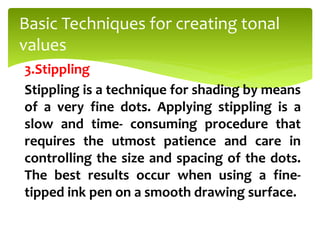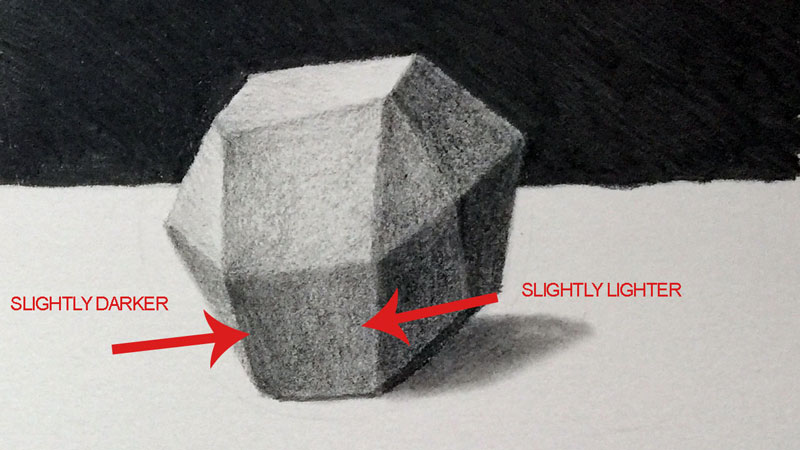Shading Techniques. Stippling Shading Techniques Tonal shading: This involves creating various levels of light and dark. Darkness should be created. - ppt download

Darkness should be created in the areas where little or no light is hitting the object. Lighter areas should be created where light is hitting the object the most. Scumble shading: This is the most basic form of shading. It involves lightly shading the object to capture the light and dark areas. Only one coat is typically placed on the object. Smudge shading: This involves blending your shading using your hand or an object (eg. a tortillian)..
Few or no lines should be placed where the light is hitting the object. More lines should be placed in the areas where little or no light is hitting the object. Cross hatching: This type of shading is similar to hatching. It involves drawing lines in two different directions. These lines should intersect with each other. Accent lines: This involves using lines to emphasize certain areas on the object (eg. creating rough lines to showcase a shadow on a tree)..
A higher concentration of dots should be placed where little or no light is hitting the object..
It consists of paper that has been rolled up. Kleenex Q-tip Dry paint brush.
Retrieved from Lauri the Artist’s blog: What are Accent Lines Retrieved from

FOD UNIT 4 shading technique.pptx
How does a beginning artist learn how to shade properly? - Quora

DESIGNING.pptx

Shading Techniques. Stippling Shading Techniques Tonal shading: This involves creating various levels of light and dark. Darkness should be created. - ppt download

Shading techniques…controlling VALUE - ppt download

Shading Techniques: Six Methods to Master Shading

Contrast Contrast - FasterCapital

Shading Techniques - The Basics of Shading

A Guide To Pencil Sketching Techniques, PDF, Drawing

How to shade & pencil shading techniques

Shading Techniques - How to Shade with a Pencil









